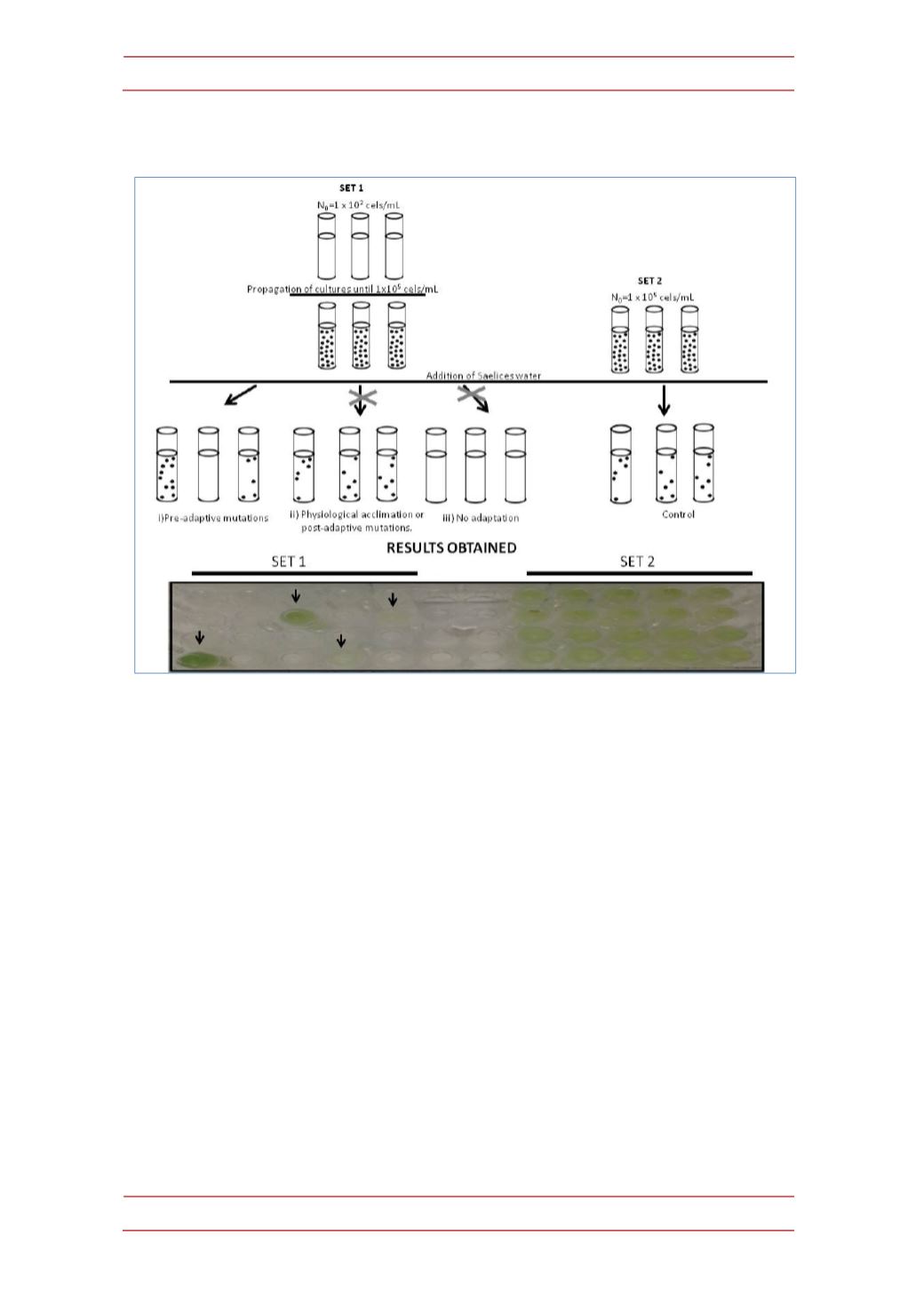
Microalgae: the first nuclear engineers?
639
that allow rapid adaptation of mesophyle microalgae to extreme environment of
the uranium pond (Figure 2).
Figure 2.-‐ Schematic diagram of the possible results of a modified fluctuation analysis by
Lopez-‐Rodas et al., (2001), from a classic Luria and Delbrück (1943) method.
Two sets of
experiments were performed: in set 1, 96 cultures, founded from an initial inoculums of N
0
=10
2
cells, were propagated until N
t
=10
5
cells without selective conditions and then, Saelices water
enriched with BG
11
medium was added. The result obtained from set1 was i) adaptation thanks for
rare pre-‐selective mutations occurred randomly before the exposure to Saelices water during the
propagations of the cultures. The differences between the culture flasks depend in the early or late
occurrence of the mutational event (arrows show the culture flasks that presented growth). The
other two possible results of set1 are: ii) physiological acclimation or post-‐adaptive mutations (the
cell number among the culture flasks must be similar) and iii) no adaption at all (empty culture
flasks). In set 2, used as a control in other to sample the variance of the paternal population, the 30
replicates had initially N
0
= 10
5
cell from the same parental culture. The result obtained in set 2 was
a similar number of resistance cells in all the cultures.
A massive destruction of cells was observed in each experimental culture of
both sets 1 and 2 in the fluctuation analysis with Saelices evaporation pond water.
However, after further incubation during 10 weeks proliferation of living resistant
cells was observed in 7 cultures of set 1 experiments of
C. reinhardtii
.
Simultaneously proliferation of resistant cells was also detected in all the cultures
of set 2. The fluctuation in the number of resistant cells observed in set 1
experiment significantly exceeded the fluctuation observed in set 2 controls (set 1


